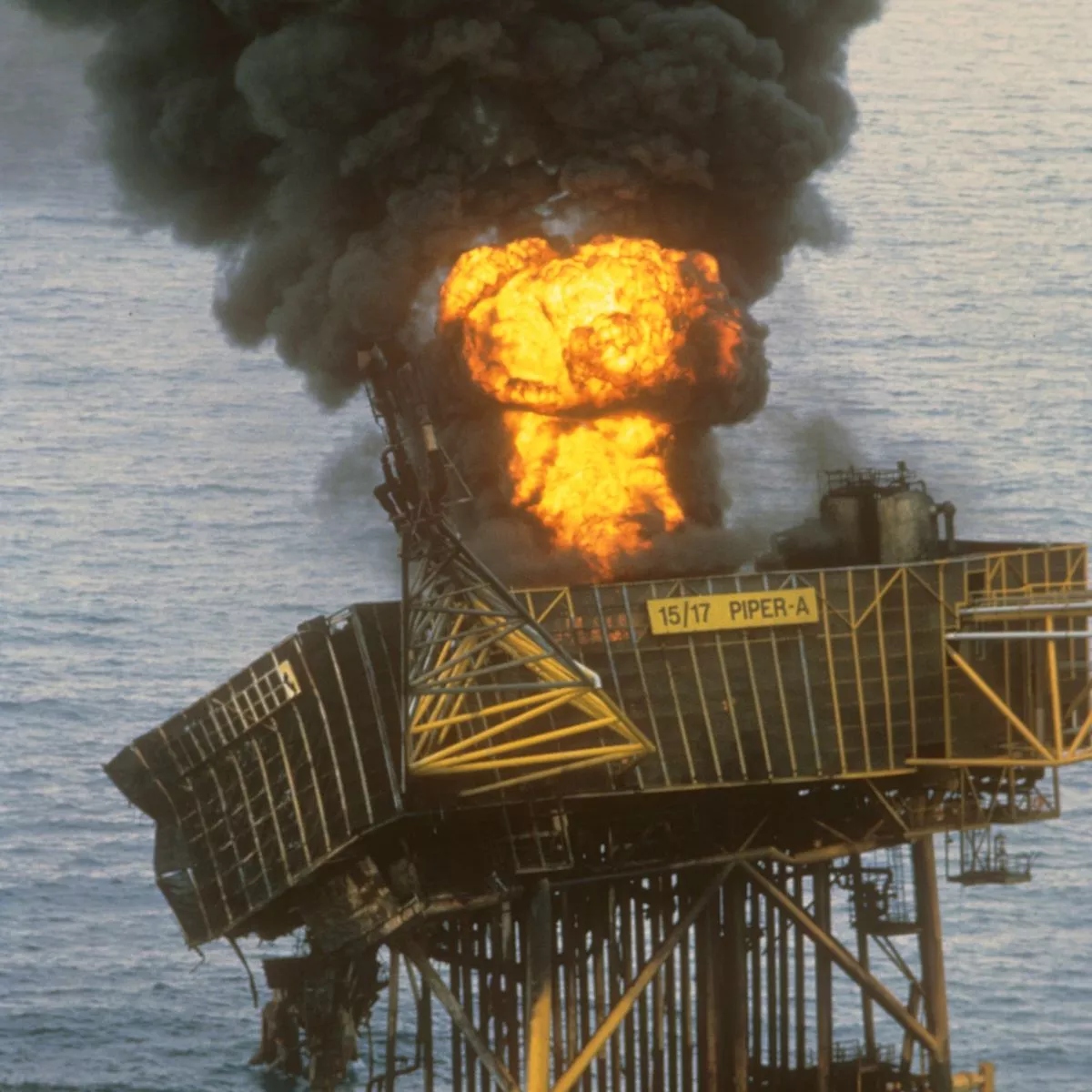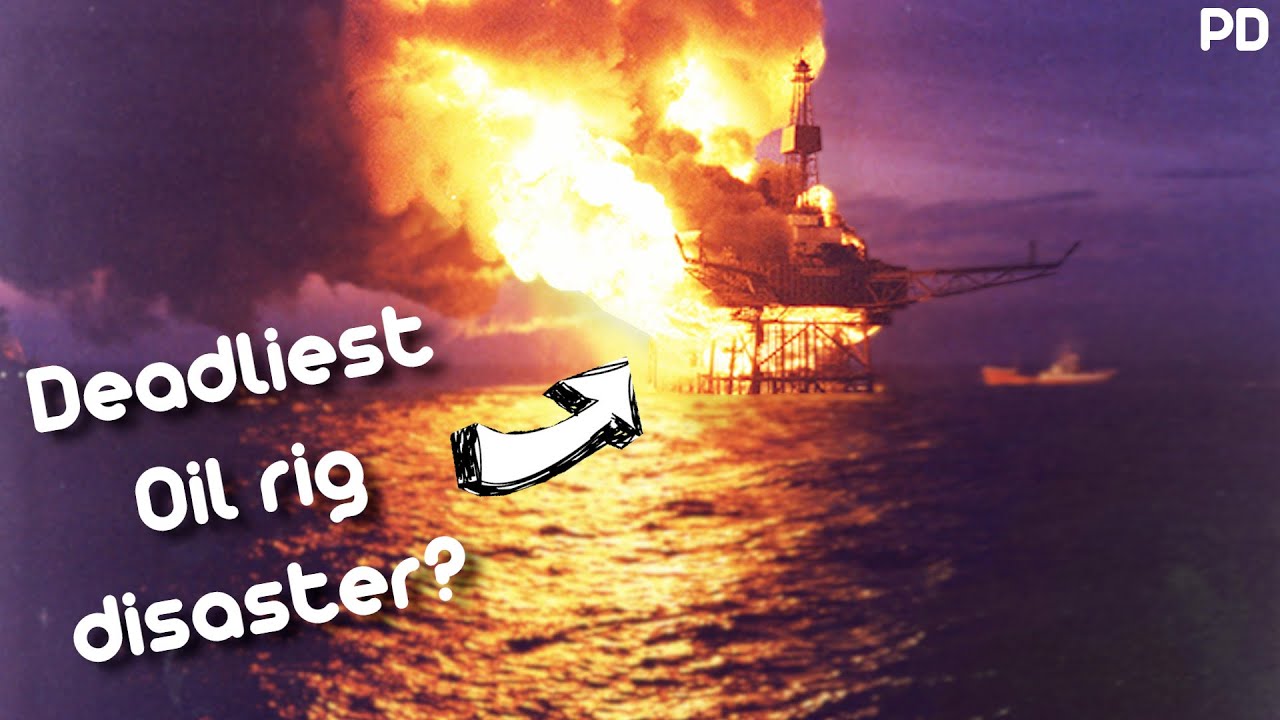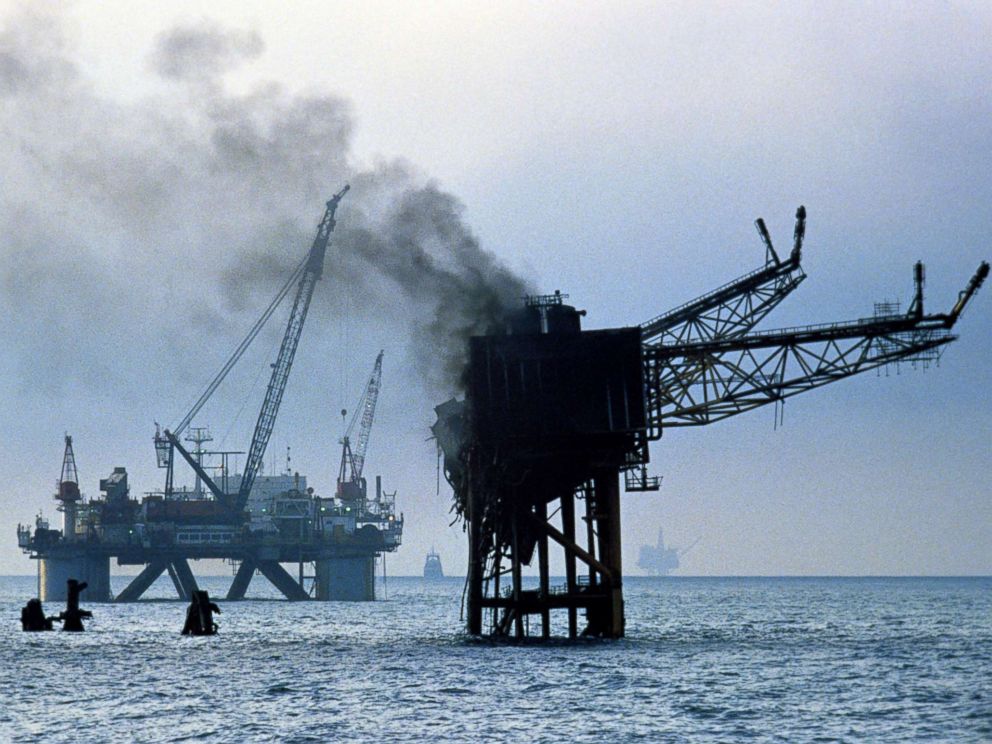Piper Alpha Disaster Is World’s Deadliest Offshore Tragedy Ever
The Piper Alpha disaster is world’s deadliest offshore tragedy ever in the history of the offshore oil industry. It's been more than 35 years since the world's greatest offshore catastrophe occurred, 120 miles off the coast of Scotland.
Author:Dr. Felix ChaosphereReviewer:Xander OddityJul 19, 202310.1K Shares282.3K Views

The Piper Alpha disaster is world’s deadliest offshore tragedy everin the history of the offshore oil industry. It's been more than 35 years since the world's greatest offshore catastrophe occurred, 120 miles off the coast of Scotland.
On July 6, 1988, an explosion and subsequent fire on the Piper Alpha oil platform, located in the North Sea, claimed the lives of 167 people, leaving a lasting impact on the sector.
Due to a breakdown in communication during a shift change, employees were unaware that they should not use a critical piece of pipework that had been sealed with a temporary cover and had no safety valve. Gas leaked out and ignited, while on an oil platform, firewalls that would have withstood fire failed to deal with the resulting gas explosion.
When the platform blew up, 167 of the 228 workers on the rig or on one of the safety standby vessels patrolling it were killed.
mong them, 109 perished from smoke inhalation, 13 from drowning, 11 from burn injuries, and 4 from unknown reasons. Thirty bodies were never found. Only 61 people survived.
This article delves into the events that led to the disaster, its immediate aftermath, and the subsequent changes made to enhance safety in offshore oil operations.
Piper Alpha - A Major Oil Production Facility
The Piper Alpha oil platform was a significant oil production facility located in the North Sea, approximately 120 miles northeast of Aberdeen, Scotland. Operated by Occidental Petroleum, it played a crucial role in extracting and processing vast quantities of crude oil from the sea depths. The platform was a complex structure, housing numerous drilling and production facilities to facilitate the extraction and transportation of oil to the mainland.
Built-in the 1970s, Piper Alpha was considered one of the most advanced and productive offshore platforms of its time. Its strategic location in the North Sea made it a valuable asset to the oil industry, contributing substantially to the United Kingdom's oil production. The platform boasted cutting-edge technology and employed a large workforce to maintain smooth operations around the clock.
Over the years, Piper Alpha had become a central hub for oil extraction, supporting multiple wells in the surrounding area. Its vital role in the oil industry meant that any disruption in its operations could have significant consequences for the oil production and supply chain.
The Fateful Events Of July 6, 1988
On July 6, 1988, a series of unforeseen and tragic events unfolded, turning Piper Alpha into a scene of devastation and horror. The Piper Alpha disaster is world’s deadliest offshore tragedy ever that began with a routine maintenance operation on one of the platform's gas condensate pumps. Unfortunately, the pump malfunctioned, causing the oil production process to shut down temporarily.
In response to the technical issue, operators on the platform decided to use a smaller backup pump to maintain the critical gas supply. However, they were unaware that the backup pump lacked essential safety features and was not suitable for this specific function. This fateful decision would lead to catastrophic consequences.
As the backup pump was activated, it failed to contain the high-pressure gas mixture properly. The gas leaked and ignited, resulting in a massive explosion on the platform. The explosion was followed by a rapidly spreading fire, fueled by the presence of abundant flammable hydrocarbons.
The platform's emergency response system proved insufficient to handle such a catastrophic event. There were no effective means of firefighting or emergency evacuation. The lifeboats, which were supposed to serve as a last resort for evacuation, were rendered useless by the intense heat and flames.
The combination of the initial explosion, the uncontrolled fire, and the lack of effective emergency response measures left the workers on the platform facing a harrowing choice. Some remained onboard, desperately hoping for rescue, while others had no option but to leap into the icy waters of the North Sea in a desperate bid to escape the raging inferno.
In the aftermath of the disaster, rescue teams, helicopters, and nearby vessels rushed to the scene to aid the survivors. Despite their heroic efforts, the scale of the devastation was immense, and tragically, 167 lives were lost in what became the world's deadliest offshore tragedy.
Uncontrolled Explosion And Fire
The Piper Alpha disaster of July 6, 1988, was initiated by an uncontrolled explosion that rapidly escalated into a devastating fire, leading to the world's deadliest offshore tragedy. The explosion occurred after a critical technical malfunction in one of the platform's gas condensate pumps. As the high-pressure gas leaked and ignited, it triggered a catastrophic chain reaction, causing immense destruction and loss of life.
The initial explosion was of unprecedented magnitude, releasing a tremendous amount of energy that severely damaged the platform's structure. The explosion not only compromised critical systems but also ruptured pipelines, further exacerbating the situation. The ensuing fire fed on the abundance of flammable hydrocarbons present on the platform, turning Piper Alpha into an inferno that raged out of control.
As the fire spread, it engulfed multiple areas of the platform, making firefighting efforts futile. The intense heat and smoke hampered rescue and evacuation attempts, leaving many workers trapped in precarious and life-threatening situations.
With the platform's infrastructure severely compromised, communications became sporadic, hindering the coordination of emergency responses. The combination of the explosion's force, the uncontrollable fire, and the chaotic aftermath created a nightmarish scenario that posed unprecedented challenges to the platform's occupants and rescue teams alike.
Lack Of Emergency Response Preparedness
The Piper Alpha disaster exposed a significant lack of emergency response preparedness on the platform. The event was a wake-up call to the offshore oil industry, highlighting the dire need for robust safety protocols and effective emergency plans to be in place at all times.
One of the most glaring issues was the absence of a comprehensive and well-practiced evacuation plan. The lifeboats, meant to serve as a primary means of evacuation during emergencies, were not adequately protected against the intense fire and heat. As a result, many lifeboats were rendered unusable, leaving workers with limited options for escape.
Additionally, there was a lack of adequate firefighting measures on the platform. The ferocity of the fire overwhelmed the existing firefighting capabilities, making it nearly impossible to contain the blaze effectively. The lack of properly functioning fire suppression systems and inadequate fireproofing measures contributed to the fire's rapid spread and intensity.
The absence of regular emergency drills and training for such extreme scenarios also exacerbated the situation. In a high-risk environment like an offshore oil platform, workers must be well-prepared and equipped to respond swiftly and efficiently during emergencies. The lack of proper training and coordination further compromised the safety of the platform's occupants.
Furthermore, the disaster underscored the need for better communication systems on the platform. The breakdown of communication during the crisis impeded the flow of vital information and coordination of rescue efforts. Effective communication is critical during emergencies to ensure that the right actions are taken promptly and to keep everyone informed about the situation's developments.

A Brief History of: The Piper Alpha Oil Rig Disaster (Short Documentary)
The Aftermath And Rescue Efforts
The aftermath of the Piper Alpha disaster was a scene of immense devastation and grief. As the flames finally subsided and the smoke cleared, the true scale of the tragedy became apparent. The platform, once a bustling hub of oil production, now lay in ruins, a stark reminder of the human cost of industrial accidents.
Rescue efforts began immediately after the explosion, with nearby vessels and helicopters rushing to the scene to aid the survivors. Despite the challenging conditions, rescue teams displayed remarkable courage and determination, risking their lives to save others. They navigated through thick smoke and intense heat, attempting to reach the workers stranded on the platform.
However, the magnitude of the disaster posed overwhelming challenges to the rescue operation. The fierce fire and the unstable platform structure made it hazardous for rescue teams to access certain areas. The lack of functioning lifeboats and escape routes further complicated the evacuation process. Many workers were forced to find alternative means of escape, jumping into the frigid waters of the North Sea in a desperate attempt to survive.
The rescue teams, maritime vessels, and helicopters worked tirelessly throughout the night and in the following days, plucking survivors from the water and providing medical attention. Despite their best efforts, the tragedy claimed the lives of 167 people, leaving behind devastated families, colleagues, and communities.
In the aftermath of the disaster, grief and shock reverberated not only among the victims' families but also throughout the globaloffshore oil industry. The Piper Alpha disaster served as a sobering reminder of the inherent risks and vulnerabilities of such operations and the pressing need for enhanced safety measures.
Investigating The Causes
Following the Piper Alpha disaster, comprehensive investigations were launched to determine the underlying causes and contributing factors that led to the catastrophe. The aim was not only to understand what went wrong but also to prevent similar incidents from occurring in the future.
The investigations revealed several critical safety failures and lapses in management decisions that collectively led to the disaster. One of the primary findings was the platform's inadequate fire and explosion containment measures. The safety systems were not designed to handle an event of such catastrophic magnitude, leaving the workers vulnerable to the devastating consequences of the initial explosion and fire.
Moreover, the incident highlighted the importance of proper maintenance and technical assessment of equipment. The decision to use a smaller backup pump without crucial safety features demonstrated the risks associated with makeshift solutions during critical operations.
The investigation also revealed lapses in emergency response preparedness. The absence of a comprehensive evacuation plan and malfunctioning lifeboats made it difficult for workers to escape the platform safely. Effective emergency response planning and well-practiced drills are vital in high-risk environments to ensure quick and coordinated actions during crises.
Furthermore, the Piper Alpha disaster exposed issues with the platform's communication systems. The breakdown of communication during the crisis hindered the dissemination of vital information and coordination of rescue efforts. Effective communication is crucial during emergencies to ensure that the right actions are taken promptly and everyone is kept informed about the situation's developments.
As a result of the investigations, significant changes were implemented in the offshore oil industry to enhance safety standards. New regulations were established, focusing on risk assessments, hazard identification, and emergency response planning. Worker training was intensified, and emphasis was placed on teamwork, communication, and contingency procedures to improve safety during critical operations.
Impacts On The Offshore Oil Industry
The Piper Alpha disaster of July 6, 1988, had far-reaching impacts on the offshore oil industry, prompting a comprehensive reevaluation of safety practices and protocols. The tragedy served as a wake-up call for the entire sector, highlighting the dire need for enhanced safety measures and emergency preparedness in high-risk environments.
- Regulatory Changes -In the aftermath of the disaster, governments and regulatory bodies worldwide responded by introducing stringent safety regulations for offshore oil platforms. The focus shifted to risk assessments, hazard identification, and emergency response planning to minimize the likelihood of similar incidents occurring in the future. These new regulations aimed to create a safer working environment and set higher safety standards for the industry.
- Emergency Response Protocols -The Piper Alpha disaster exposed the deficiencies in emergency response preparedness on offshore platforms. As a result, there was a significant overhaul of emergency response protocols. Workers received enhanced training in handling crises and evacuation procedures. Drills and simulations were conducted regularly to ensure that personnel were well-prepared to respond swiftly and efficiently during emergencies.
- Safety Culture -The disaster underscored the importance of fostering a strong safety culture in the offshore oil industry. Companies began placing a greater emphasis on safety awareness, encouraging employees to prioritize safety in all aspects of their work. The aim was to create an environment where workers felt empowered to raise safety concerns and take proactive measures to prevent accidents.
- Improved Communication Systems -The breakdown of communication during the Piper Alpha crisis was a critical issue. In response, the industry invested in improving communication systems on offshore platforms. Robust communication networks were implemented to ensure seamless coordination during emergencies, allowing for swift response and informed decision-making.
- Advanced Safety Technology -The tragedy expedited the development and implementation of advanced safety technologies for offshore platforms. These technologies included improved fire suppression systems, better safety equipment, and enhanced structural integrity designs. Such advancements were aimed at mitigating potential risks and protecting workers from harm.
People Also Ask
How Many People Lost Their Lives In The Piper Alpha Tragedy?
The Piper Alpha disaster claimed the lives of 167 people, making it the world's deadliest offshore tragedy.
Who Owned And Operated The Piper Alpha Oil Platform?
The Piper Alpha oil platform was owned and operated by Occidental Petroleum.
What Caused The Piper Alpha Disaster?
The disaster was caused by a series of events, including the failure of a gas condensate pump, leading to an explosion and subsequent fire due to the release of high-pressure gas.
What Changes Were Made In The Offshore Oil Industry After The Piper Alpha Disaster?
In the aftermath of the tragedy, significant changes were implemented to improve safety standards, including new regulations, improved emergency response protocols, and enhanced worker training and welfare on oil platforms. These changes aimed to prevent similar incidents and prioritize safety in the industry.
Conclusion
The Piper Alpha disaster is world’s deadliest offshore tragedy ever and continues to serve as a tragic landmark in the history of the offshore oil industry. The loss of 167 lives on that fateful day has left an indelible mark, sparking fundamental changes in safety practices and regulations. While the disaster's immediate impact was devastating, its legacy lies in the collective commitment to preventing similar tragedies and prioritizing the safety and well-being of those who work in offshore oil operations.

Dr. Felix Chaosphere
Author
Dr. Felix Chaosphere, a renowned and eccentric psychiatrist, is a master of unraveling the complexities of the human mind. With his wild and untamed hair, he embodies the essence of a brilliant but unconventional thinker. As a sexologist, he fearlessly delves into the depths of human desire and intimacy, unearthing hidden truths and challenging societal norms.
Beyond his professional expertise, Dr. Chaosphere is also a celebrated author, renowned for his provocative and thought-provoking literary works. His written words mirror the enigmatic nature of his persona, inviting readers to explore the labyrinthine corridors of the human psyche.
With his indomitable spirit and insatiable curiosity, Dr. Chaosphere continues to push boundaries, challenging society's preconceived notions and inspiring others to embrace their own inner tumult.

Xander Oddity
Reviewer
Xander Oddity, an eccentric and intrepid news reporter, is a master of unearthing the strange and bizarre. With an insatiable curiosity for the unconventional, Xander ventures into the depths of the unknown, fearlessly pursuing stories that defy conventional explanation. Armed with a vast reservoir of knowledge and experience in the realm of conspiracies, Xander is a seasoned investigator of the extraordinary.
Throughout his illustrious career, Xander has built a reputation for delving into the shadows of secrecy and unraveling the enigmatic. With an unyielding determination and an unwavering belief in the power of the bizarre, Xander strives to shed light on the unexplained and challenge the boundaries of conventional wisdom. In his pursuit of the truth, Xander continues to inspire others to question the world around them and embrace the unexpected.
Latest Articles
Popular Articles
